Recently I gave a talk as part of the MGI-Gordon Distinguished Speakers’ Series at Ridley College in Niagara, Canada. My goal was to make clear to the young people in the audience that the future of augmented reality, indeed, the future of technology, will be determined by us. Let me know what you think.
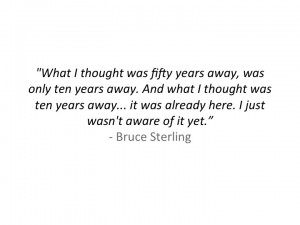
Bruce Sterling is a writer for Wired magazine and an expert on augmented reality (AR). I want to talk about is technology that you thought might be several years away, but is already here, you’re not just aware of it yet. The question is: what are we going to do with it?
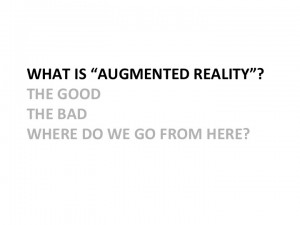 For the last 5 years I’ve been researching AR.
For the last 5 years I’ve been researching AR.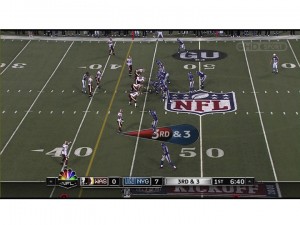 AR allows you to augment the real world with computing by adding computer-generated information to what we see in the real world. For instance, the yellow lines you see on the football field when watching the game on television.
AR allows you to augment the real world with computing by adding computer-generated information to what we see in the real world. For instance, the yellow lines you see on the football field when watching the game on television. 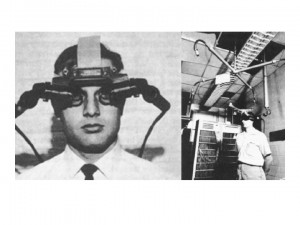 AR is not actually new, researchers have been working on it for 45 years. In the 1960s they were creating goggles and devices that added information to what we could see around us. The last decade has seen a major leap forward with the miniaturization of technology; widespread use of location-based technologies like GPS.
AR is not actually new, researchers have been working on it for 45 years. In the 1960s they were creating goggles and devices that added information to what we could see around us. The last decade has seen a major leap forward with the miniaturization of technology; widespread use of location-based technologies like GPS.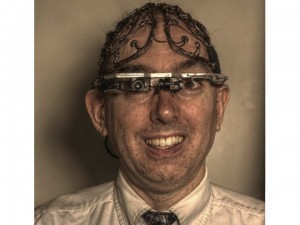 One of the leaders in this field is my colleague Steve Mann Professor at U of T. This photo shows Steve wearing the Eyetap. This device is worn in front of the eye and acts as a camera to record the scene available to the eye as well as a display to superimpose computer-generated imagery on the original scene. What if we could take the kind of stuff Steve and others have pioneered, and it into a regular pair of glasses, something that we get up in the morning and put on. What would life be like then?…
One of the leaders in this field is my colleague Steve Mann Professor at U of T. This photo shows Steve wearing the Eyetap. This device is worn in front of the eye and acts as a camera to record the scene available to the eye as well as a display to superimpose computer-generated imagery on the original scene. What if we could take the kind of stuff Steve and others have pioneered, and it into a regular pair of glasses, something that we get up in the morning and put on. What would life be like then?… 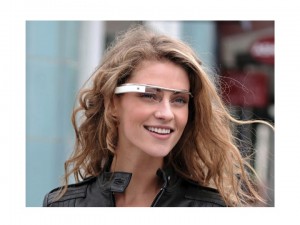 Google Glass is pretty cool! Google recently held a contest and the winners received a pair to test and develop applications (unfortunately, only in the U.S.) Google glass is expected to hit the market in early 2014 (approximate cost of the glasses is expected to be $1500).
Google Glass is pretty cool! Google recently held a contest and the winners received a pair to test and develop applications (unfortunately, only in the U.S.) Google glass is expected to hit the market in early 2014 (approximate cost of the glasses is expected to be $1500).  This is the future that’s already here. What’s the upside? There’s a lot!
This is the future that’s already here. What’s the upside? There’s a lot!  Lots of applications for travel and translation. AR will allow you to translate an important headline in the newspaper or if you get to a tap and want to fill your water bottle-a sign-is it telling me I CAN drink the water, or is it telling me that I can’t-if I drink the water I’ll get sick?
Lots of applications for travel and translation. AR will allow you to translate an important headline in the newspaper or if you get to a tap and want to fill your water bottle-a sign-is it telling me I CAN drink the water, or is it telling me that I can’t-if I drink the water I’ll get sick?  All major automobile companies are working on implementing AR windshields in their cars.
All major automobile companies are working on implementing AR windshields in their cars.  AR for healthcare. Instead of testing with a spring-loaded needle 6-8 times a day, a person with diabetes simply pops in the AR contact lens. The lens detects glucose levels in the person’s tears, and small radios and antennas built into the lens send out information wirelessly.
AR for healthcare. Instead of testing with a spring-loaded needle 6-8 times a day, a person with diabetes simply pops in the AR contact lens. The lens detects glucose levels in the person’s tears, and small radios and antennas built into the lens send out information wirelessly.  This is “Gladius soldier system”. A solider wears these goggles and a satellite or drone data will overhead identify allies, and enemy. They then appear on the soldier’s goggles, at ground level: enemies red, allies in blue.
This is “Gladius soldier system”. A solider wears these goggles and a satellite or drone data will overhead identify allies, and enemy. They then appear on the soldier’s goggles, at ground level: enemies red, allies in blue.  We are most familiar with this kind of technology in the field of gaming, which is one of my areas of research; when you play a video game, it’s normal to have information projected into your field of view.
We are most familiar with this kind of technology in the field of gaming, which is one of my areas of research; when you play a video game, it’s normal to have information projected into your field of view.  Toronto company XMG Studio developed the game “Ghostbusters Paranormal Blast”, which was awarded Best AR App by Best App Ever Awards. Player steer ghosts into a virtual ghost trap for containment and collection.
Toronto company XMG Studio developed the game “Ghostbusters Paranormal Blast”, which was awarded Best AR App by Best App Ever Awards. Player steer ghosts into a virtual ghost trap for containment and collection. 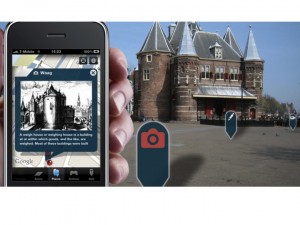 Imagine you are travelling in Europe and you visit a castle that’s not in your guidebook. Use an AR app to find out: when it was built; who lived here?; where’s the best place to take a picture?; where are the washrooms?
Imagine you are travelling in Europe and you visit a castle that’s not in your guidebook. Use an AR app to find out: when it was built; who lived here?; where’s the best place to take a picture?; where are the washrooms?  Or what if you’re visiting Manhattan, and you get on the bus, and see Sergei Brin, the founder of Google, on the bus, wouldn’t it be fun to take a picture of him?
Or what if you’re visiting Manhattan, and you get on the bus, and see Sergei Brin, the founder of Google, on the bus, wouldn’t it be fun to take a picture of him? 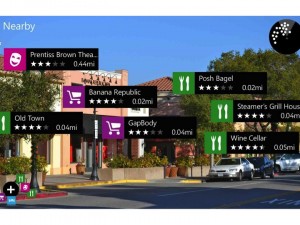 Access Information Quickly and Customize Personal Experiences
Access Information Quickly and Customize Personal Experiences  There’s no doubt that this kind of technological change is very exciting and the upside is considerable But what is the downside?
There’s no doubt that this kind of technological change is very exciting and the upside is considerable But what is the downside? 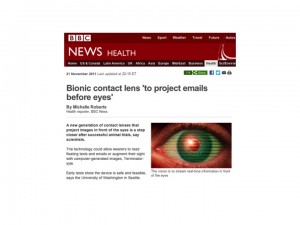 It might be nice to have bionic contact lenses, but do we really want to have emails or text messages or Facebook updates projected onto our eyes? Don’t we need to get away from that sometimes, to turn it off?
It might be nice to have bionic contact lenses, but do we really want to have emails or text messages or Facebook updates projected onto our eyes? Don’t we need to get away from that sometimes, to turn it off? 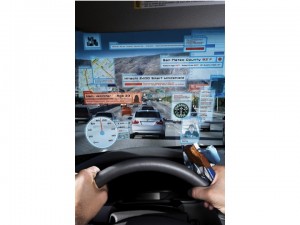 When driving your car, some additional information will be helpful but where’s the line between providing help, and adding distractions? If you’re on the phone, eating a protein bar, and trying to keep track of everything on your screen, how are you going to focus on the road?
When driving your car, some additional information will be helpful but where’s the line between providing help, and adding distractions? If you’re on the phone, eating a protein bar, and trying to keep track of everything on your screen, how are you going to focus on the road?
I talked about healthcare earlier. If I was having an operation, I’d want my surgeon to be able to access additional information that would help her operate on my heart. But what happens if the technology breaks down in the middle of my operation? Where’s the line between use and over-reliance? 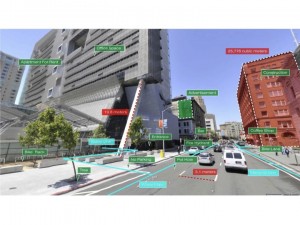 It’s great that we can provide information to prospective shoppers walking down the street. But this raises the question, who owns this virtual space? Say I run a store on 5th Avenue in Manhattan, and I’m paying a lot in rent for that real estate. What happens if I launch 30% off sale on the shoes that I sell in that store. What if someone else decides to advertise on this same virtual spot, right outside my store and because they don’t have to pay rent they can sell the same pair of shoes for 75% off? Who owns that virtual space?
It’s great that we can provide information to prospective shoppers walking down the street. But this raises the question, who owns this virtual space? Say I run a store on 5th Avenue in Manhattan, and I’m paying a lot in rent for that real estate. What happens if I launch 30% off sale on the shoes that I sell in that store. What if someone else decides to advertise on this same virtual spot, right outside my store and because they don’t have to pay rent they can sell the same pair of shoes for 75% off? Who owns that virtual space?  Sergei Brin has chosen to wear the glasses and maybe you’ve taken a picture of him. But guess what, Sergei Brin is wearing Google Glass, and he’s taking a video of you. The video goes to a database and is stored, GPS will track you, and that will also go to a database and be stored. Computers will make educated guesses about what you’re interested in based on your history, on what’s stored in those databases. The computers will send you “interesting information” based on what it knows.
Sergei Brin has chosen to wear the glasses and maybe you’ve taken a picture of him. But guess what, Sergei Brin is wearing Google Glass, and he’s taking a video of you. The video goes to a database and is stored, GPS will track you, and that will also go to a database and be stored. Computers will make educated guesses about what you’re interested in based on your history, on what’s stored in those databases. The computers will send you “interesting information” based on what it knows.  And because everyone is using these glasses, we’ll have constantly updated street views. Google street view won’t be a couple of years old. It’ll be a couple of seconds old. Ultimately, and this is where it gets scary, or exciting, depending on your perspective, we will have created the ultimate social network. Anyone wearing glasses (which, remember, need cameras to work properly) will be recording what’s going on around them, including your activities, regardless of whether or not you’re wearing glasses. And that information will be available to the world. Maybe like me you’re a bit worried about Facebook, and the way it uses all of the information like the photos or friends, that I post to it. Forget Facebook. Regardless of how you feel about social networks, you’ll be in one.
And because everyone is using these glasses, we’ll have constantly updated street views. Google street view won’t be a couple of years old. It’ll be a couple of seconds old. Ultimately, and this is where it gets scary, or exciting, depending on your perspective, we will have created the ultimate social network. Anyone wearing glasses (which, remember, need cameras to work properly) will be recording what’s going on around them, including your activities, regardless of whether or not you’re wearing glasses. And that information will be available to the world. Maybe like me you’re a bit worried about Facebook, and the way it uses all of the information like the photos or friends, that I post to it. Forget Facebook. Regardless of how you feel about social networks, you’ll be in one. 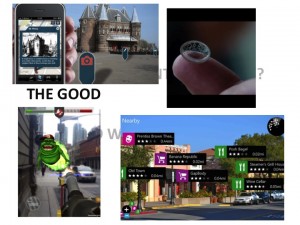 The future is already here. It’s going to change many things for the better. Health might improve, travel might be easier, businesses can communicate with us more easily, and we can play games outside again.
The future is already here. It’s going to change many things for the better. Health might improve, travel might be easier, businesses can communicate with us more easily, and we can play games outside again. 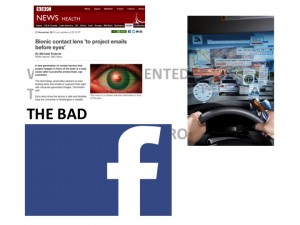 But it could also have a downside. We might get overloaded with information; all that information might make life more dangerous, not safer, and we may lose our privacy.
But it could also have a downside. We might get overloaded with information; all that information might make life more dangerous, not safer, and we may lose our privacy. 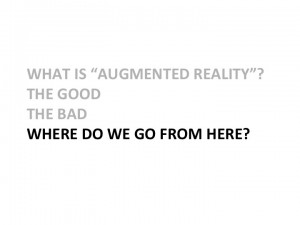 The question I asked at the beginning was “where do we go from here?”. What are we going to do with it?
The question I asked at the beginning was “where do we go from here?”. What are we going to do with it? 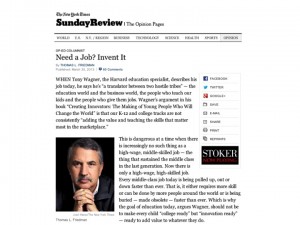 New York Times columnist Thomas Friedman published an article titled “Need a Job? Invent It”. The point he made was that in the future, we won’t “find a job”, so much as “invent a job” and the schools of today need to prepare young people for that future.
New York Times columnist Thomas Friedman published an article titled “Need a Job? Invent It”. The point he made was that in the future, we won’t “find a job”, so much as “invent a job” and the schools of today need to prepare young people for that future. 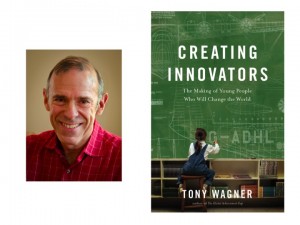 The article is really an interview with Harvard professor Tony Wagner, who’s written a book called “Creating Innovators”. He believes that success in the future will go to those who solve problems creatively, and bring new things to life. Success will go to those who use AR in the most innovative and creative way. This is my first message: schools need to cultivate that innovation and creativity, so that we can bring the new possibilities for AR to life.
The article is really an interview with Harvard professor Tony Wagner, who’s written a book called “Creating Innovators”. He believes that success in the future will go to those who solve problems creatively, and bring new things to life. Success will go to those who use AR in the most innovative and creative way. This is my first message: schools need to cultivate that innovation and creativity, so that we can bring the new possibilities for AR to life.  This is Nick D’Aloisio. He’s 17. He was studying for a history exam, and he was frustrated because when he went to Google, he got a lot of information that wasn’t relevant; so he decided to build something better. He then sold sold his company-Summly-to Yahoo for $30 million. AR is going to open a lot more opportunities for new Nick D’Aloisio’s. This is my second message: our schools need to be fostering the creativity that leads to that invention…. But perhaps you’re not a computer programmer.
This is Nick D’Aloisio. He’s 17. He was studying for a history exam, and he was frustrated because when he went to Google, he got a lot of information that wasn’t relevant; so he decided to build something better. He then sold sold his company-Summly-to Yahoo for $30 million. AR is going to open a lot more opportunities for new Nick D’Aloisio’s. This is my second message: our schools need to be fostering the creativity that leads to that invention…. But perhaps you’re not a computer programmer. 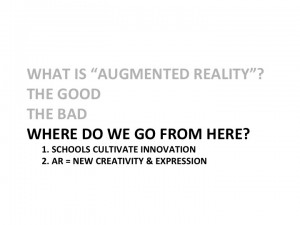 Although it helps to know how computers and software work, you don’t have to be a die-hard programmer to create AR. AR allows everyone to be creative, to communicate in new ways.
Although it helps to know how computers and software work, you don’t have to be a die-hard programmer to create AR. AR allows everyone to be creative, to communicate in new ways. 
 I say this because… I started as a history professor. I wrote a book about religion.
I say this because… I started as a history professor. I wrote a book about religion. 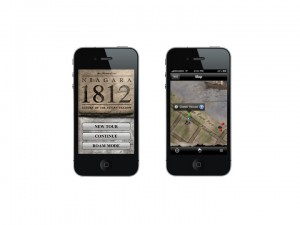 But I really wanted to help people learn about the history all around them so when the iPhone came out, I built one of the first iPhone tour apps-Niagara 1812. It’s great to read about Laura Secord in a book but now you can literally walk in her footsteps, find out about her while you wander around her house, or neighborhood.
But I really wanted to help people learn about the history all around them so when the iPhone came out, I built one of the first iPhone tour apps-Niagara 1812. It’s great to read about Laura Secord in a book but now you can literally walk in her footsteps, find out about her while you wander around her house, or neighborhood. 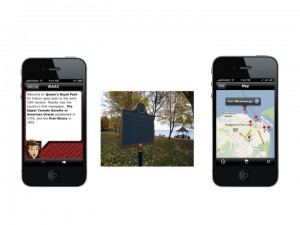
 Now I’m working with others to build an application that will let people create their own tour apps. Winery tours, battlefield tours, campus tours-and this is my third message for you: if a historian can create these, anybody can!
Now I’m working with others to build an application that will let people create their own tour apps. Winery tours, battlefield tours, campus tours-and this is my third message for you: if a historian can create these, anybody can! 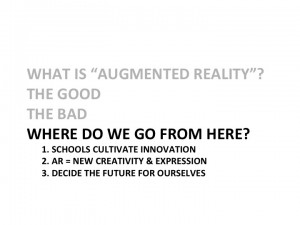 The future is a little bit scary. It’s going to have huge ramifications for how we live our lives. Say you want to skip a class, and you tell your teacher that you’re going to the dentist. But somebody records you walking into the movies at the mall instead. Facial recognition technology will pick you out of that crowd in a second. A world in which I’m constantly under surveillance is not one I want to live in and I don’t have the answers for how all of this is going to work out. But as an historian, I know that history isn’t predetermined; it’s up to us to decide what our AR future will look like. I’m looking forward to what you’re going to come up with in the years to come: i. prepared by your school to innovate; ii. using AR to express whatever is important to you; iii. and in this way deciding what our future will be together.
The future is a little bit scary. It’s going to have huge ramifications for how we live our lives. Say you want to skip a class, and you tell your teacher that you’re going to the dentist. But somebody records you walking into the movies at the mall instead. Facial recognition technology will pick you out of that crowd in a second. A world in which I’m constantly under surveillance is not one I want to live in and I don’t have the answers for how all of this is going to work out. But as an historian, I know that history isn’t predetermined; it’s up to us to decide what our AR future will look like. I’m looking forward to what you’re going to come up with in the years to come: i. prepared by your school to innovate; ii. using AR to express whatever is important to you; iii. and in this way deciding what our future will be together. 

